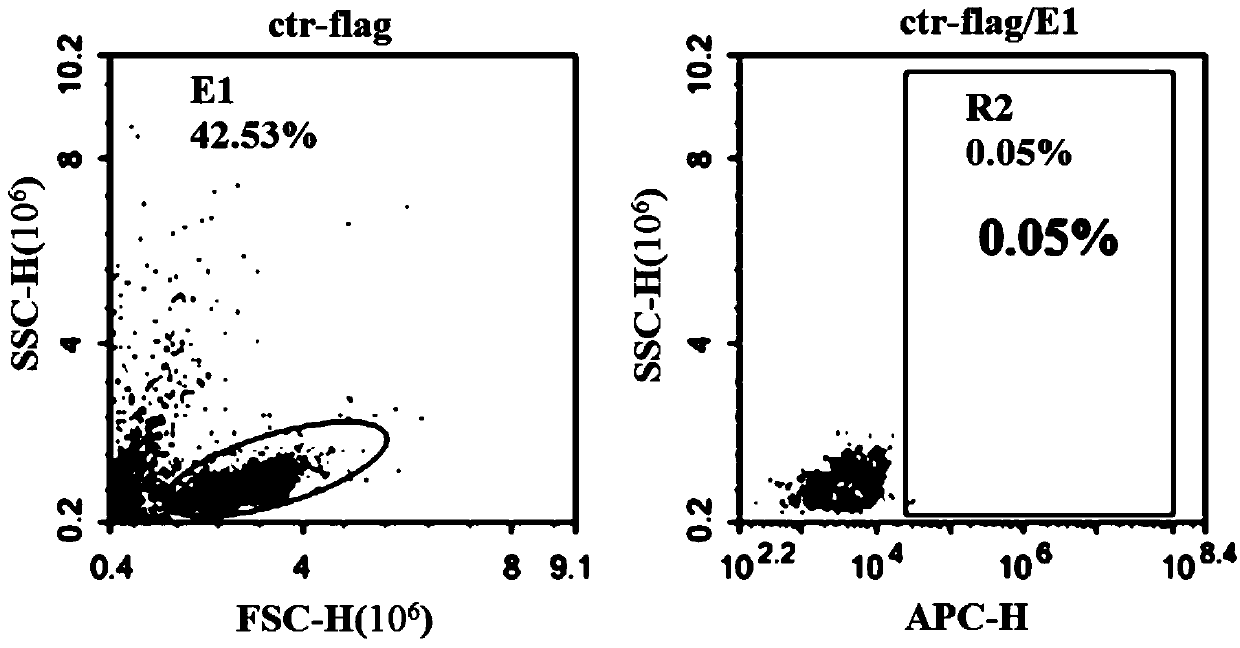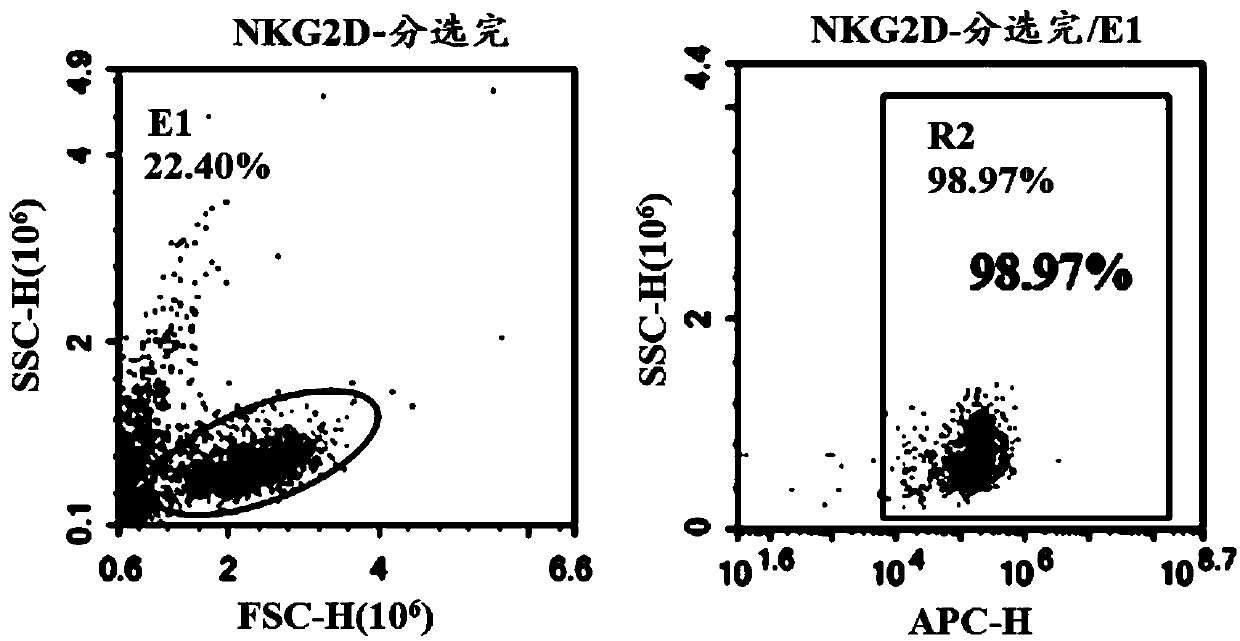Chimeric antigen receptor, NKG2D CAR-NK cell expressing chimeric antigen receptor, preparation method and application thereof
A chimeric antigen receptor, antigen technology, applied in genetically modified cells, DNA/RNA fragments, cells modified by introducing foreign genetic material, etc. problem, to achieve the effect of low cost, less toxic and side effects, and improved targeting
- Summary
- Abstract
- Description
- Claims
- Application Information
AI Technical Summary
Problems solved by technology
Method used
Image
Examples
Embodiment 1
[0078] The preparation of embodiment 1 lentiviral vector
[0079] Gene synthesis NKG2D-CD8 TM - 4-1BB-CD3ζ fusion gene sequence (its amino acid sequence is shown in SEQ ID NO: 1, and the gene sequence is shown in SEQ ID NO: 2), through enzyme digestion, NKG2D-CD8 TM - The 4-1BB-CD3ζ fusion gene sequence was transformed and connected to the PRRSLIN vector, and the upstream of the gene was the EP-1α promoter. Transform the Stbl3 E. coli strain with the vector, screen with ampicillin, obtain positive clones, extract the plasmids, identify the clones by enzyme digestion, and obtain the PRRLSIN-NKG2D lentiviral transfection vector (such as figure 1 shown).
Embodiment 2
[0080] The preparation of embodiment 2 lentiviruses
[0081] (1) 24 hours before transfection, use about 8×10 per dish 6 293T cells were inoculated into 15cm culture dishes. Make sure that the cells are at about 80% confluence during transfection, and the transfected cells are evenly distributed in the culture dish.
[0082] (2) Prepare solution A and solution B
[0083] Solution A: 6.25ml 2×HEPES buffer (the amount packed in 5 large dishes, the effect is the best).
[0084] Solution B: a mixture obtained by adding the following plasmids: 112.5 μg PRRLSIN-NKG2D (targetplasmid); 39.5 μg pMD2.G (VSV-G envelope); 73 μg pCMVR8.74 (gag, pol, tat, rev); 625 μl 2M calcium ion solution. Total volume of solution A: 6.25ml.
[0085] Mix solution B well, and while vortexing solution A gently, add solution B drop by drop to obtain a mixed solution of A and B, and let stand for 5-15 minutes. Gently vortex the above mixed solution of A and B, and add it dropwise to the culture dish co...
Embodiment 3
[0086] Example 3 Preparation of NKG2D CAR-NK cells
[0087] Adjust the NK-92 cell density to 2~3×10 5 / ml, add lentivirus (prepared in Example 2) according to the volume ratio (V / V) lentivirus: cell culture medium = 1:5, and add polybrene 8 μg / ml at the same time. After 4 h, add an equal amount of fresh complete medium to adjust the NK-92 cell density to 1×10 5 / ml to continue the culture. The next day, all the cells were centrifuged, fresh medium was added, and the culture was continued. Replenish fluid every 1-2 days to maintain cell density at 2-3×10 5 / ml. After 72 hours, CAR antibody staining was performed, and NKG2D CAR NK-92 positive cells were sorted by flow cytometry and expanded for culture. Observe the color change of the medium, cell density, and cell shape every day and make corresponding records.
[0088] The positive rate of NKG2D CAR NK-92 cells was detected by flow cytometry, and the results of flow cytometry were as follows: Figure 2a and Figure 2b...
PUM
 Login to View More
Login to View More Abstract
Description
Claims
Application Information
 Login to View More
Login to View More - R&D
- Intellectual Property
- Life Sciences
- Materials
- Tech Scout
- Unparalleled Data Quality
- Higher Quality Content
- 60% Fewer Hallucinations
Browse by: Latest US Patents, China's latest patents, Technical Efficacy Thesaurus, Application Domain, Technology Topic, Popular Technical Reports.
© 2025 PatSnap. All rights reserved.Legal|Privacy policy|Modern Slavery Act Transparency Statement|Sitemap|About US| Contact US: help@patsnap.com



